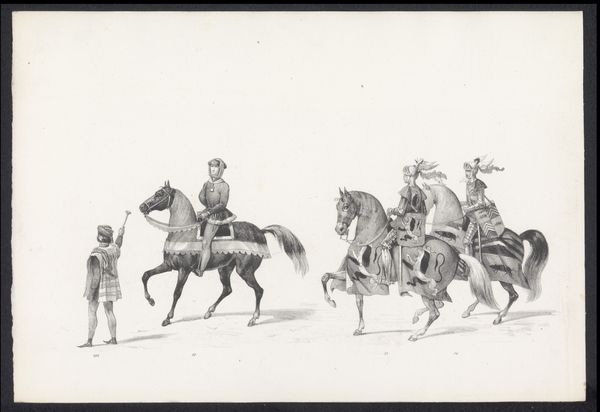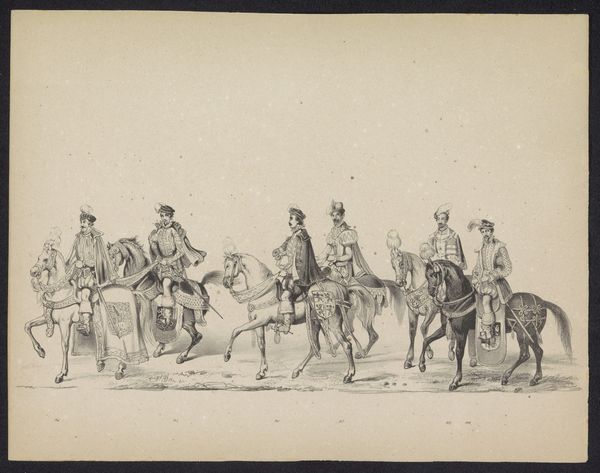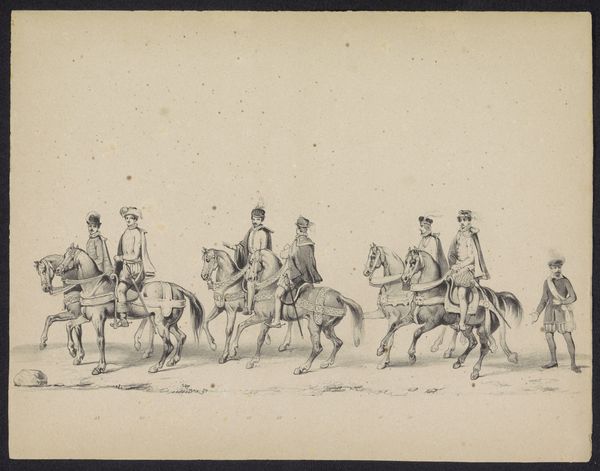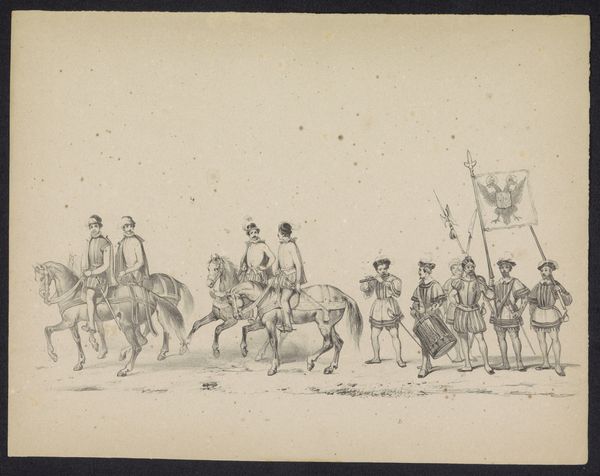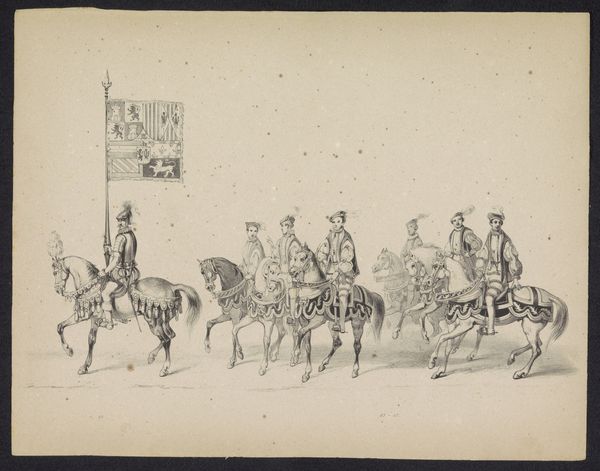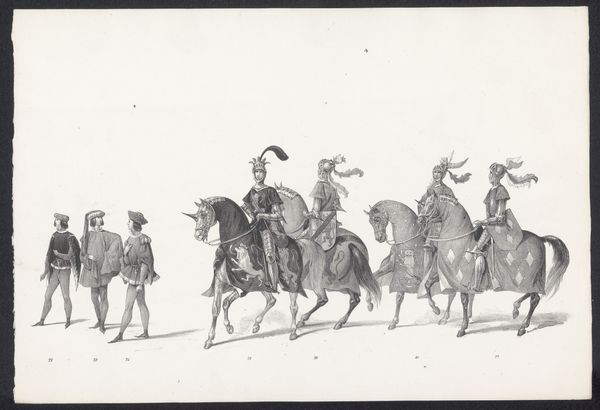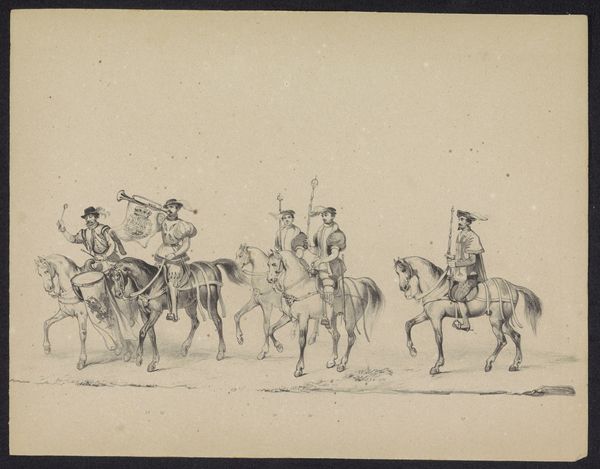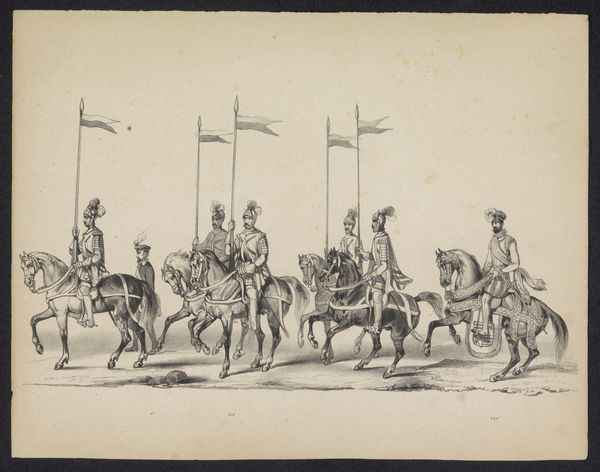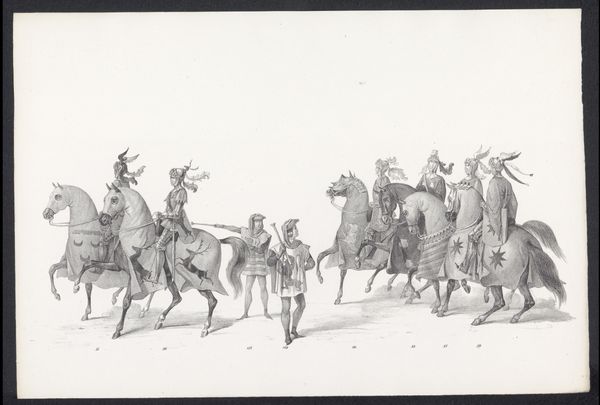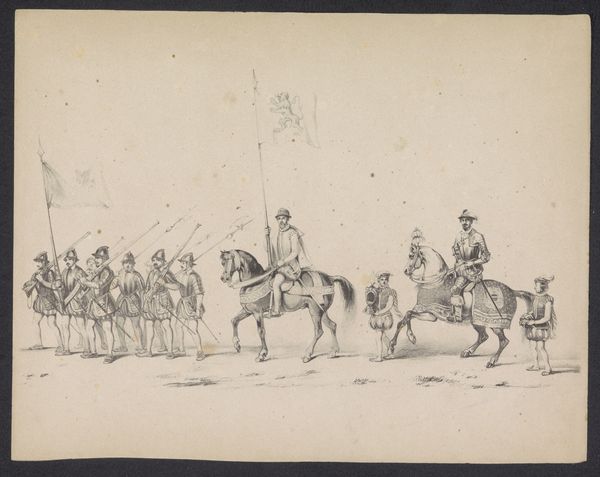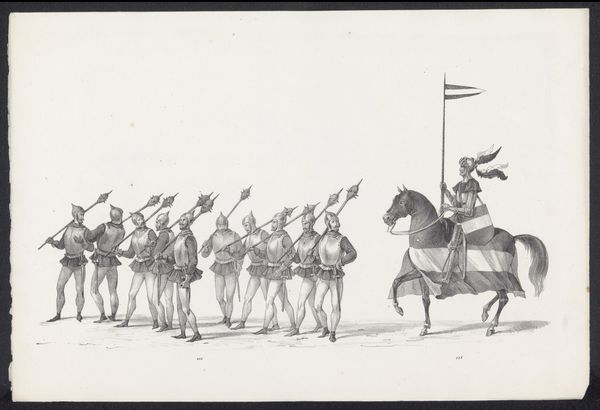
Maskerade door studenten van de Leidse Hogeschool, 1840 (plaat 14) 1840
0:00
0:00
jacobusludovicuscornet
Rijksmuseum
drawing, print, graphite
#
drawing
#
imaginative character sketch
#
light pencil work
#
quirky sketch
#
shading to add clarity
# print
#
pencil sketch
#
figuration
#
personal sketchbook
#
ink drawing experimentation
#
romanticism
#
pen-ink sketch
#
graphite
#
sketchbook drawing
#
genre-painting
#
history-painting
#
fantasy sketch
Dimensions: height 232 mm, width 340 mm
Copyright: Rijks Museum: Open Domain
Editor: Here we have "Masquerade by Students of the Leiden College, plate 14," created by Jacobus Ludovicus Cornet in 1840. It looks like a graphite drawing or print. What strikes me is the regimented lines, but they are also strangely…fragile. How do you interpret this work? Curator: From a materialist perspective, consider the function of prints and drawings in the 19th century. Reproducibility makes art accessible to a broader audience, impacting taste and consumption. What kind of social role would this kind of art have played for the artist, the college and the town? Editor: That's interesting. So, the artist probably made this artwork so a broad audience of people from the college, or Leiden perhaps, can access the work. Curator: Precisely. The labor invested in the drawing itself, transferred through the printing process, results in a commodity available for purchase and dissemination. This work collapses what we see as high art into popular craft; consider its affordability and role in spreading cultural ideas beyond elite circles. Editor: That shifts my understanding quite a bit. The uniforms seem less about individual artistry and more about collective identity, readily replicated and consumed. It’s also the industrial revolution happening, so this makes a lot of sense! Curator: Yes. It highlights how artistic representations became entangled with production and accessibility. Do you see the implications this process has for the contemporary art? Editor: Well, it makes me think about art in our age and the concept of 'originality.' So many art forms today, like digital art or even printed photography, can be reproduced almost infinitely! It prompts me to think differently about an artwork. Thanks! Curator: Indeed! Examining these older works from a materialist perspective helps us to question assumptions about authorship, value, and the nature of art itself.
Comments
No comments
Be the first to comment and join the conversation on the ultimate creative platform.
